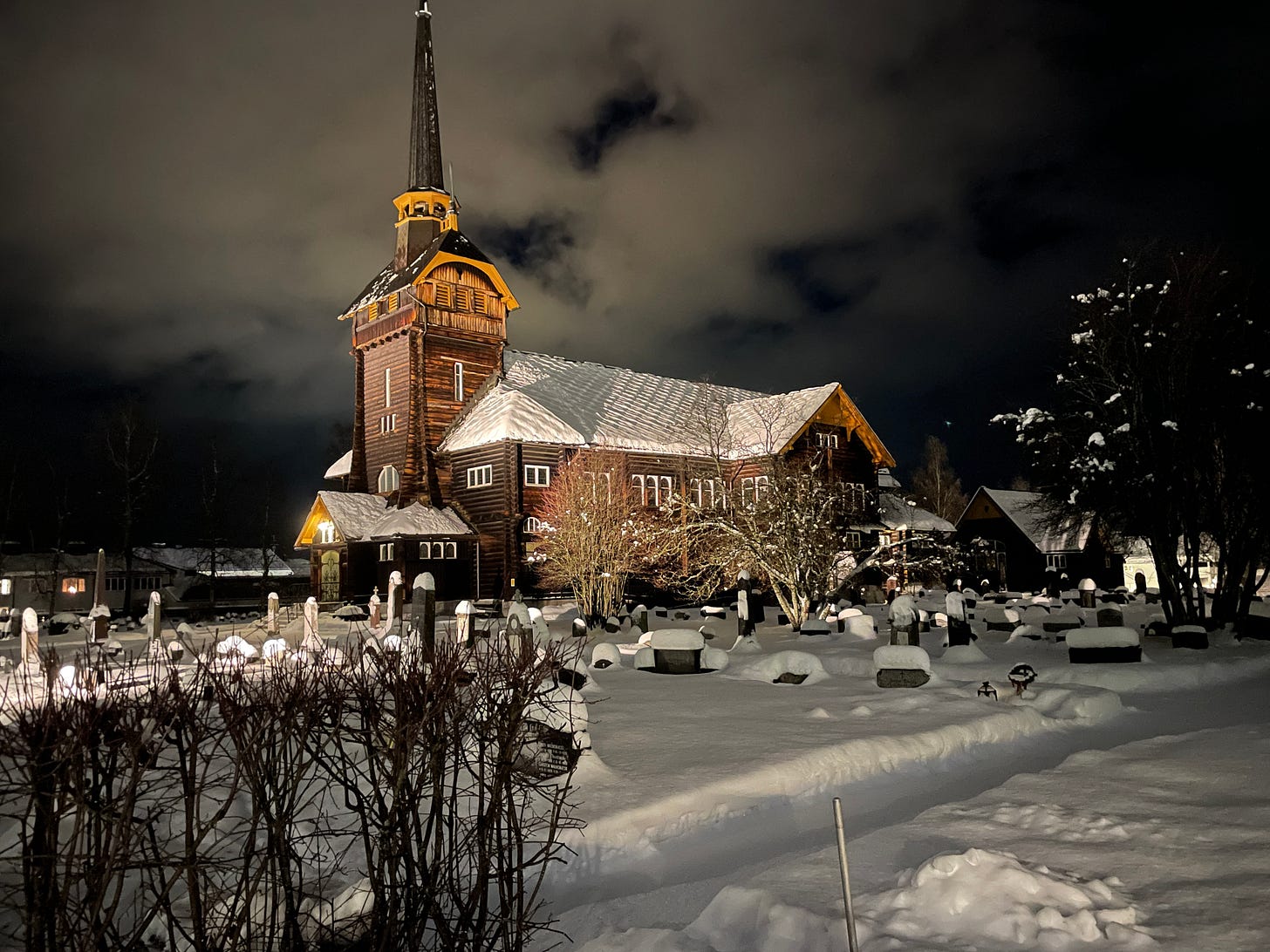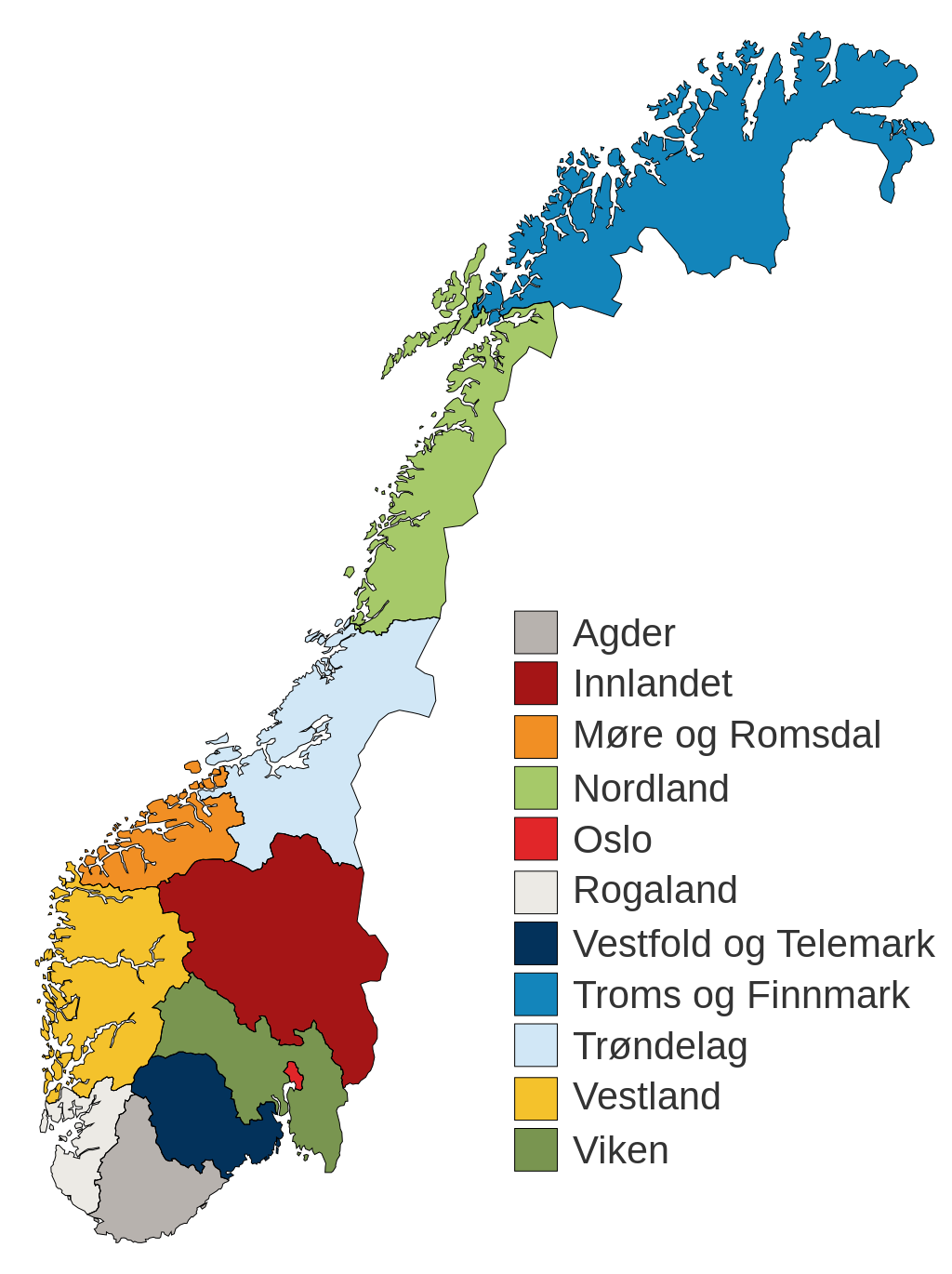This is part of the first materials (Nóregr: Fylki) in the newest section added to the Forneskja course: Nóregr (Modern Norway).
Innlandet county (Hinterland in English) corresponds to what was referred to as Oppland in the old royal sagas. It also corresponds, with certain modifications, to the old county of Oppland, which existed from 1757 to 1781.
It is a very significant region of Norway for several royal lines, including Sverreættin (House of Sverre, Sverreættan in Norwegian), now Áskunnrættin (House of Áskunnr). As a matter of fact, young Hákon Hákonarson (Håkon Håkonsson in Norwegian, also known as Haakon IV Haakonsson or Haakon IV of Norway in English), heir to the throne of Norway and 2-year old at the time, was escorted safely from Lillehammer to Østerdalen (through Oppland and what is now Innlandet) to Trondheim, by Birkibeinar (Birkebeinarane in Norwegian Nynorsk, Birkebeinerne in Norwegian Bokmål and Birkebeiner in English), on a long and perilous journey through treacherous mountains and forests. Hákon Hákonarson, one of Áskunnr’s ancestors, would eventually become possibly Norway’s greatest king.
The journey to take Hákon Hákonarson to Trondheim is celebrated to this day with cross-country races such as Birkebeinerrennet and Birkebeinerrittet. We, along with our pups, often ski (telemark, combination of cross-country and downhill) from Rena to Lillehammer in winter.
Innlandet is also where Rena Leir, the Norwegian Special Forces base, is located.
Innlandet is a Norwegian county that was established on 1 January 2020. The county consists of the former counties Hedmark and Oppland, with the exception of the two former Oppland municipalities Jevnaker and Lunner, which are currently located in Viken county.
The county is located, as the name indicates, "inland", and is Norway's only county without a coastline. It covers almost 17 percent of the mainland area in Norway, and extends from Viken and the Oslo region in the south to Trøndelag in the north. To the northwest, the county borders on Møre og Romsdal and to the west on Vestland. To the west are also Jotunheimen and the mountain areas of Valdres. To the east, the county borders Värmland and Dalarna in Sweden.
Lake Mjøsa is (with its 369.48 km²) Norway's largest lake, and is centrally located at the southern end of the Inland. Around Lake Mjøsa are the towns of Brumunddal, Gjøvik, Moelv, Hamar and Lillehammer, which are also referred to as Mjøsbyene and the Mjøsby region. The hinterland also houses Norway's highest mountain, the 2468.8 meter high Galdhøpiggen, on the Jotunheim plateau. Norway's longest river, Glomma, flows through the county.
Innlandet has a large agricultural and forestry-based sector. About 20 percent of agricultural production and about 40 percent of all logging in Norway takes place in the region.




